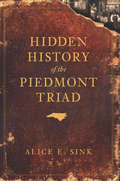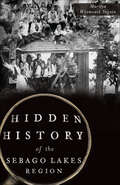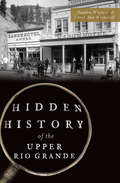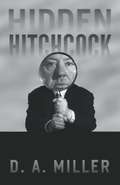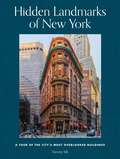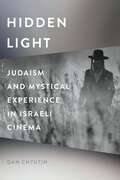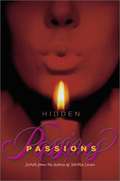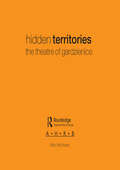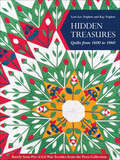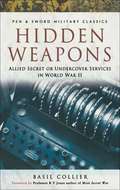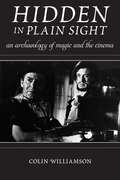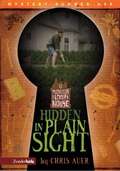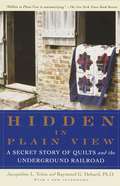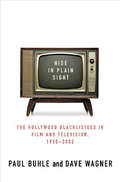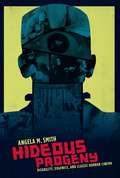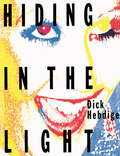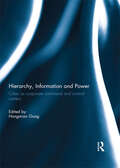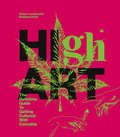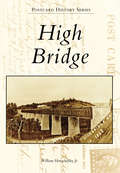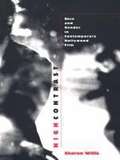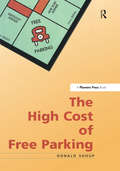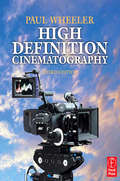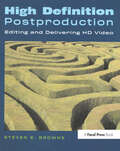- Table View
- List View
Hidden History of the Piedmont Triad (Hidden History)
by Alice E. SinkThere are many stories about the history of the Piedmont Triad area of North Carolina (including Greensboro, Winston-Salem and High Point) that even the natives have never heard. Join longtime Piedmont Triad resident and writer Alice E. Sink on this journey to uncover those out-of-the-ordinary historical truths that rarely appear in books. Learn about the nightclub in High Point that once hosted the likes of Ella Fitzgerald and Duke Ellington and the famous short story writer O. Henry's connection to a Greensboro drugstore. Have you heard the story of Lexington native John Andrew Roman, put to death on circumstantial evidence, or the local World War II fighter plane pilot who flew eighty-two missions to prevent German fighters from attacking American bombers? These fascinating true tales featuring towns throughout the region will delight and inform readers of all ages.
Hidden History of the Sebago Lakes Region (Hidden History)
by Marilyn Weymouth SeguinQuirky characters and surprising events have shaped a robust community history throughout the Sebago Lakes region. Nathaniel Hawthorne's lost boyhood diary offers a glimpse into his early writing days on the shore of Sebago Lake. Henry Clay Barnabee, once called the funniest man of his time, brought his crew here for relaxing lakeside summers to rest up their vocal cords around the turn of the century. Discover the story behind a stolen Chinese statue that might just be responsible for a string of curses in Naples and misfortune on the shores of Long Lake. Marilyn Weymouth Seguin explores the unusual, the mysterious and the sometimes weird layers of regional history that have remained hidden--until now.
Hidden History of the Upper Rio Grande (Hidden History)
by Carol Ann Wetherill Sandra WagnerHome to long-forgotten mining towns, defunct fisheries and neglected cabins, the turbulent headwaters of the Upper Rio Grande conceal a largely unknown history. Bob Wills and his Texas Playboys brought their legendary Texas swing to Crooked Creek Canyon's S Lazy U barn dance, while a comedy of errors unfolded around the ranch's secret still. Obstetrician Dr. MaryAnn Faunce, the daughter of an abolitionist and suffragette, made house calls as a real-life Dr. Quinn, Medicine Woman. Rough-and-tumble miners drawn to Creede's silver boom found accommodations ranging from the primitive to the opulent, though none as enduring as the Creede Hotel. Upper Rio Grande native Carol Ann Wetherill and author Sandra Wagner preserve and celebrate the pioneering spirit that defined the early days in this obscure corner of southern Colorado.
Hidden Hitchcock
by D. A. MillerNo filmmaker has more successfully courted mass-audience understanding than Alfred Hitchcock, and none has been studied more intensively by scholars. In Hidden Hitchcock, D. A. Miller does what seems impossible: he discovers what has remained unseen in Hitchcock's movies, a secret style that imbues his films with a radical duplicity. Focusing on three films--Strangers on a Train, Rope, and The Wrong Man--Miller shows how Hitchcock anticipates, even demands a "Too-Close Viewer." Dwelling within us all and vigilant even when everything appears to be in good order, this Too-Close Viewer attempts to see more than the director points out, to expand the space of the film and the duration of the viewing experience. And, thanks to Hidden Hitchcock, that obsessive attention is rewarded. In Hitchcock's visual puns, his so-called continuity errors, and his hidden appearances (not to be confused with his cameos), Miller finds wellsprings of enigma. Hidden Hitchcock is a revelatory work that not only shows how little we know this best known of filmmakers, but also how near such too-close viewing comes to cinephilic madness.
Hidden Landmarks of New York: A Tour of the City's Most Overlooked Buildings
by Tommy SilkDiscover dozens of underappreciated landmarks and the stories behind them in this unique history on New York City, written and photographed by Landmarks of NY creator, Tommy Silk. New York is a city of landmarks – more than 37,000 of them. Visitors and New Yorkers walk by hundreds of these landmarks daily, often never knowing the rich history behind each of these buildings. One of these New Yorkers, Tommy Silk, has been photographing and chronicling a landmarked building every day for the last five years on his Instagram account, Landmarks of NY. In Hidden Landmarks of New York, Silk uncovers 120 of the city&’s oldest, most unique, and often relatively unknown landmarks and the hidden history behind them. Whether it&’s an African Graveyard a stone&’s throw from City Hall; the Truman Capote house in Brooklyn Heights that he claimed to own (but actually just rented a room there for years); or 4 Gramercy Park West, the Greek Revival-style townhouse that is rumored to be the home of Stuart Little; each entry includes a picture of the landmark with a short, informative description of its history and its past (often well-known) inhabitants. With 120 photographs beautifully designed in a portable book, it&’s perfect for armchair perusal or to stash in your backpack while wandering around the city.
Hidden Light: Judaism and Mystical Experience in Israeli Cinema (Contemporary Approaches to Film and Media Series)
by Dan ChyutinOver the past several decades, the prevailing attitude toward Judaism in Israeli society has undergone a meaningful shift; where the national ethos had once deemed Judaic traditions a vestige of an arcane past incompatible with the culture of a modern state, there is now greater acceptance of these traditions by a sizeable part of Israeli society. Author Dan Chyutin reveals this trend through a parallel shift toward acceptance and celebration of Judaic identity and lifestyle in modern Israeli cinema. Hidden Light explores the Judaic turn in contemporary Israeli filmmaking for what it can tell us about Israel’s cultural landscape, as well as about the cinematic medium in general. Chyutin points to the ambivalence of films which incorporate Judaism into Israel’s secular ethos; concurrently, he foregrounds the films' attempt to overcome this ambivalence through reference to and activation of experiences of transcendence and unity, made popular by New Age–inflected understandings of Jewish mystical thought. By virtue of this exploration, Judaic-themed Israeli cinema emerges as a crucial example of how film’s particular form of "magic" may be exploited for the purpose of affecting mystical states in the audience.
Hidden Passions: Secrets From The Diaries Of Tabitha Lenox
by Tabitha LenoxOn the surface, this seaside town is a New England dream of cobblestone streets and charming colonial homes. In its sleepy little harbor, fishing trawlers bob next to pleasure yachts on sun-drenched waves. But beneath the picture-perfect waters and walkways lie tumultuous secrets that threaten to tear Harmony's families apart. Hidden Passions turns back the clock in the quant town more than twenty years to reveal the intimate details of those secrets.. Sam Bennett is the hardworking son of the town's police chief. Handsome and well built, he catches the eye of every woman in town. Unfortunately, his heart belongs to one who will break it.. Eve Johnson is an upstanding premed student who on a lark decides to pursue a private fantasy -- one that could ravage her life... Julian Crane is a wealthy law student who is desperate to marry the beautiful Ivy Winthrop, but the reason why could shatter Ivy's happiness forever.. T.C. Russell lives to become a tennis pro, but his heartfelt dream is about to be smashed in a way no one would ever suspect.. Grace Standish is a home-schooled farm girl who wants nothing more than to live a peaceful life in the country until her mother reveals a shocking secret... Only one woman knows the intimate details of all their stories. While everyone in Harmony believes this woman is nothing more than a harmless eccentric, the truth is that she is an irrepressible sorceress of darkness who's been causing trouble in Harmony even before Prudence Standish accused her of being a witch in 1693 -- a grudge this society shameness still holds today! She has always known the hidden passions of every man, woman, and child in this quiet harbor town. But only now is she ready to reveal that tantalizing details to you. So turn off the Coast Road and enter Harmony...but be very careful if you should encounter a mysterious woman carrying a doll. As she's done with Harmoney townfolk for hundreds of years, she may very well look into your heart to see what it is you truly desire and grant it -- for a terribly high price
Hidden Talent: The Emergence of Hollywood Agents
by Tom KemperThis is a history of Hollywood agents as they rose in the studio system in the late 1920s and early 1930s up through the 1940s, demonstrating the central role they played in the classical Hollywood period. Includes bibliographical references and index.
Hidden Territories: The Theatre of Gardzienice
by Cd-Rom Produced By Arts Archives with Alison Hodge Wlodzimierz StaniewskiWlodzimierz Staniewski's group Gardzienice Theatre has established an unparalleled reputation for a sensual and complex performance aesthetic. The work is inspired by the expressive traditions of indigenous culture and the musicality of the natural environment. This is the first full-length articulation by Staniewski himself of this unique director's philosophy and rigorous practice. In this magnificent book and the remarkable cd-rom which accompanies it, Staniewski, with editor Alison Hodge, gives a fascinating insight into his company's principles and techniques. The cd-rom provides: *Extensive video footage of performances and rehearsals *Essays by Staniewski, Hodge, and other contributors *Photographs from the Gardzienice archives *Performance scripts *Director's notes *A full chronology of the company This innovative publication is a landmark for the documentation and appreciation of contemporary performance. It will be an exciting addition to any theatre-lover's bookshelf.
Hidden Treasures: Quilts from 1600 to 1860, Rarely Seen Pre-Civil War Textiles from the Poos Collection
by Lori Lee Triplett Kay TriplettOne hundred spectacular antique quilts from one of the largest, privately held quilt and textile collections in the world. Turn back time with color photos and insightful essays about America’s quilting past! Admire one hundred antique quilts and textiles you’ve never seen before, curated from the remarkable Poos Collection. Flip through the pages to find a wide range of styles in pre-Civil War quilting—elaborate hand piecing and appliqué, signature quilts, wholecloth beauties, cutout chintz, and intarsia, plus the only known example of an American pictorial war quilt. An invaluable resource to America’s quilt history, the Poos Collection shares its classic, one-of-a-kind quilts.Admire one hundred colorful artifacts from the priceless Poos CollectionRead insights and information on the history behind the quiltsRelax and feast your eyes on these pre-1860 quilts, including album, wool, paper-pieced, white-on-white wholecloth, red and green, indigo, and chintz quilts
Hidden Weapons: Allied Secret or Undercover Services in World War II (Pen & Sword Military Classics)
by Basil CollierIn his Foreword, Professor Jones writes 'Mr Collier takes the opportunity to review the contributions of all forms of Intelligence, and the use and misuse that was made of them, in all the major phases of World War II. His task has required very wide reading of the great volume of original documents and derivative literature now available, and I admire the judgement that is evident throughout the book. Within the limits of treating the widest aspects of Intelligence in World War II in a small compass, Mr Collier has told the whole truth, fortunately without it turning out to be very unfavorable; and in the lessons to be drawn from it we indeed have one element of security if properly applied'.Basil Collier throws fresh light on the low priority given to Intelligence between the wars; the tendency of ministers and senior officials to rely less on intelligence reports than their own individual hunches; the failure to foresee the invasion of Norway; why, even with the aid of Enigma it was impossible to turn the scales in Crete, and why the Americans, though privy to some of Japans most closely guarded secrets, allowed the Pearl Harbor attack to take them by surprise.
Hidden in Plain Sight
by Colin WilliamsonWhat does it mean to describe cinematic effects as "movie magic," to compare filmmakers to magicians, or to say that the cinema is all a "trick"? The heyday of stage illusionism was over a century ago, so why do such performances still serve as a key reference point for understanding filmmaking, especially now that so much of the cinema rests on the use of computers? To answer these questions, Colin Williamson situates film within a long tradition of magical practices that combine art and science, involve deception and discovery, and evoke two forms of wonder--both awe at the illusion displayed and curiosity about how it was performed. He thus considers how, even as they mystify audiences, cinematic illusions also inspire them to learn more about the technologies and techniques behind moving images. Tracing the overlaps between the worlds of magic and filmmaking, Hidden in Plain Sight examines how professional illusionists and their tricks have been represented onscreen, while also considering stage magicians who have stepped behind the camera, from Georges Méliès to Ricky Jay. Williamson offers an insightful, wide-ranging investigation of how the cinema has functioned as a "device of wonder" for more than a century, while also exploring how several key filmmakers, from Orson Welles to Christopher Nolan and Martin Scorsese, employ the rhetoric of magic. Examining pre-cinematic visual culture, animation, nonfiction film, and the digital trickery of today's CGI spectacles, Hidden in Plain Sight provides an eye-opening look at the powerful ways that magic has shaped our modes of perception and our experiences of the cinema.
Hidden in Plain Sight (Mystery of Eckert House #1)
by Chris AuerEerie stories surround the old Victorian mansion-turned-museum known as Eckert House. But what was once thought to be fiction may prove to be fact after twelve-year-old Dan Pruitt makes a gruesome discovery. Dan and his friends set out to uncover the truth, but will their search lead them down a path of danger instead?
Hidden in Plain View: A Secret Story of Quilts and the Underground Railroad
by Jacqueline L. Tobin Raymond G. DobardThe fascinating story of a friendship, a lost tradition, and an incredible discovery, revealing how enslaved men and women made encoded quilts and then used them to navigate their escape on the Underground Railroad. In Hidden in Plain View, historian Jacqueline Tobin and scholar Raymond Dobard offer the first proof that certain quilt patterns, including a prominent one called the Charleston Code, were, in fact, essential tools for escape along the Underground Railroad. In 1993, historian Jacqueline Tobin met African American quilter Ozella Williams amid piles of beautiful handmade quilts in the Old Market Building of Charleston, South Carolina. With the admonition to "write this down," Williams began to describe how slaves made coded quilts and used them to navigate their escape on the Underground Railroad. But just as quickly as she started, Williams stopped, informing Tobin that she would learn the rest when she was "ready." During the three years it took for Williams's narrative to unfold—and as the friendship and trust between the two women grew—Tobin enlisted Raymond Dobard, Ph.D., an art history professor and well-known African American quilter, to help unravel the mystery.Part adventure and part history, Hidden in Plain View traces the origin of the Charleston Code from Africa to the Carolinas, from the low-country island Gullah peoples to free blacks living in the cities of the North, and shows how three people from completely different backgrounds pieced together one amazing American story.With a new afterword. Illlustrations and photographs throughout, including a full-color photo insert.
Hide in Plain Sight
by Paul Buhle Dave WagnerHide in Plain Sight completes Buhle and Wagner's trilogy on the Hollywood blacklist. When the blacklistees were hounded out of Hollywood, some left for television where many worked on children's shows like "Rocky and Bullwinkle." A number wrote adult sitcoms such as The Donna Reed Show, and M*A*S*H while some of them ultimately returned to Hollywood and made great films such as Norma Rae, and Midnight Cowboy. This is a thoughtful look at the rising fear of communism in America and the aftermath of the horror that was the McCarthy period, from two expert historians of the blacklist period.
Hideous Progeny: Disability, Eugenics, and Classic Horror Cinema
by Angela M. SmithTwisted bodies, deformed faces, aberrant behavior, and abnormal desires characterized the hideous creatures of classic Hollywood horror, which thrilled audiences with their sheer grotesqueness. Most critics have interpreted such traits as symptoms of sexual repression, or as metaphors for other kinds of marginalized identities, but Angela M. Smith conducts a richer investigation into the period's social and cultural preoccupations. Presenting an altogether different reading, she finds in the narrative and spectacle of classic 1930s horror a fascination with eugenics and physical and cognitive debility, heightened by viewers' own desire for visions of vulnerability and transformation.
Hideous Progeny: Disability, Eugenics, and Classic Horror Cinema (Film and Culture Series)
by Angela SmithTwisted bodies, deformed faces, aberrant behavior, and abnormal desires characterized the hideous creatures of classic Hollywood horror, which thrilled audiences with their sheer grotesqueness. Most critics have interpreted these traits as symptoms of sexual repression or as metaphors for other kinds of marginalized identities, yet Angela M. Smith conducts a richer investigation into the period's social and cultural preoccupations. She finds instead a fascination with eugenics and physical and cognitive debility in the narrative and spectacle of classic 1930s horror, heightened by the viewer's desire for visions of vulnerability and transformation. Reading such films as Dracula (1931), Frankenstein (1931), Dr. Jekyll and Mr. Hyde (1931), Freaks (1932), and Mad Love (1935) against early-twentieth-century disability discourse and propaganda on racial and biological purity, Smith showcases classic horror's dependence on the narratives of eugenics and physiognomics. She also notes the genre's conflicted and often contradictory visualizations. Smith ultimately locates an indictment of biological determinism in filmmakers' visceral treatments, which take the impossibility of racial improvement and bodily perfection to sensationalistic heights. Playing up the artifice and conventions of disabled monsters, filmmakers exploited the fears and yearnings of their audience, accentuating both the perversity of the medical and scientific gaze and the debilitating experience of watching horror. Classic horror films therefore encourage empathy with the disabled monster, offering captive viewers an unsettling encounter with their own impairment. Smith's work profoundly advances cinema and disability studies, in addition to general histories concerning the construction of social and political attitudes toward the Other.
Hiding in the Light: On Images and Things (Comedia)
by Dick HebdigeDick Hebdige looks at the creation and consumption of objects and images as diverse as fashion and documentary photographs, 1950's streamlined cars, Italian motor scooters, 1980's 'style manuals', Biff cartoons, the Band Aid campaign, Pop Art and promotional music videos. He assesses their broad cultural significance and charts their impact on contemporary popular tastes.
Hierarchy, Information and Power: Cities as Corporate Command and Control Centers
by Hongmian GongThis book is a collection of selected papers presented in the 2012 annual meeting of the Association of American Geographers in New York honoring James O. Wheeler (1938-2010). The eight papers are informed and inspired by James O. Wheeler's many contributions to urban geography, particularly in the areas of urban hierarchy, information flows, cities in the telecommunications age, and cities as corporate command and control centers. They adopt and extend Jim Wheeler’s corporate and/or hierarchical approaches to discuss institutional investment in the U.S., corporate interlocking directorates and fast-growing firms in Canada, corporate intangible assets in South Korea, urban development in Beijing and Macau, and social and cultural diversity of global cities such as New York. Although these two approaches are not the fanciest ones in today's urban geography, they are essential to the understanding of how urban areas are connected and what drives this interconnectedness in this age of globalization. This book was previously published as a special issue of Urban Geography.
High Art: The Definitive Guide to Getting Cultured with Cannabis
by Robert Lambrechts Estefanio HoltzArt can be confusing. Luckily, there&’s marijuana. This book pairs fifty classic works from all around the world with unique cannabis recommendations. High Art gives you answers to questions that have long plagued art history students, such as Is there an edible that will help me understand Cubism? (Yes!) Can a cannabis strain connect me more deeply to late-period Van Gogh? (Of course!) And Should I be intimidated by the work of William Blake? (Very much so—but cannabis extracts can help.)To get in touch with your inner self while viewing Van Gogh&’s Self-Portrait with a Straw Hat, toke on some of Gravita&’s Red-Headed Stranger and really feel the brush strokes wash over you. Or while viewing Henri Rousseau&’s 1910 Tropical Forest with Monkeys, you might smoke some mild Purple Monkey followed by a snack of THC-infused dried fruits for a body float that will allow you to connect with your primitive nature.So whether you know a lot about art and nothing about cannabis or a lot about cannabis and nothing about art, it&’s high time you expanded your mind.
High Bridge (Postcard History)
by William Honachefsky Jr.The history of High Bridge is intertwined with the development of the iron and steel industry in the United States. As early as the 1700s, the framework of this little hamlet had already been created by English investors who carved up the rich wilderness of the New World, brimming with iron ore that would be essential to the county's development. High Bridge Borough evolved around the Taylor Wharton Foundry, established in 1742. With the passage of time, however, High Bridge has lost its farming and foundry roots, evolving into what is often referred to as a bedroom community. Just like the lofty trestle from which High Bridge derived its name, the city now runs the risk of being lost to time, forsaking the resilient character of the immigrants who forged a nation. This book aims to preserve High Bridge's glorious history for future generations.
High Contrast: Race and Gender in Contemporary Hollywood Films
by Sharon WillisIn High Contrast, Sharon Willis examines the dynamic relationships between racial and sexual difference in Hollywood film from the 1980s and 1990s. Seizing on the way these differences are accentuated, sensationalized, and eroticized on screen--most often with little apparent regard for the political context in which they operate--Willis restores that context through close readings of a range of movies from cinematic blockbusters to the work of the new auteurs, Spike Lee, David Lynch, and Quentin Tarantino.Capturing the political complexity of these films, Willis argues that race, gender, and sexuality, as they are figured in the fantasy of popular film, do not function separately, but rather inform and determine each other's meaning. She demonstrates how collective anxieties regarding social difference are mapped onto big budget movies like the Die Hard and Lethal Weapon series, Basic Instinct, Fatal Attraction, Thelma and Louise, Terminator 2, and others. Analyzing the artistic styles of directors Lynch, Tarantino, and Lee, in such films as Wild at Heart, Pulp Fiction, and Do the Right Thing, she investigates how these interactions of difference are linked to the production of specific authorial styles, and how race functions for each of these directors, particularly in relation to gender identity, erotics, and fantasy.
High Cost of Free Parking
by Donald ShoupOff-street parking requirements are devastating American cities. So says the author in this no-holds-barred treatise on the way parking should be. Free parking, the author argues, has contributed to auto dependence, rapid urban sprawl, extravagant energy use, and a host of other problems. Planners mandate free parking to alleviate congestion, but end up distorting transportation choices, debasing urban design, damaging the economy, and degrading the environment. Ubiquitous free parking helps explain why our cities sprawl on a scale fit more for cars than for people, and why American motor vehicles now consume one-eighth of the world's total oil production. But it doesn't have to be this way. The author proposes new ways for cities to regulate parking, namely, charge fair market prices for curb parking, use the resulting revenue to pay for services in the neighborhoods that generate it, and remove zoning requirements for off-street parking.
High Definition Cinematography
by Paul WheelerHigh-definition is now ubiquitous in video production and High Definition Cinematography, Third Edition provides the explanations, definitions, and workflows that today's cinematographers and camera operators need to make the transition. Paul Wheeler will explain the high-definition process, suggest the best methods for filming, and help you choose the right camera and equipment for your crew with this comprehensive book. You'll also learn the different formats and when best to use them, how to create specific looks for different venues, and learn how to operate a wide variety of popular cameras.
High Definition Postproduction: Editing and Delivering HD Video
by Steven E. Browne* Real-world postproduction paths show how it's being done today * Numerous HD tables clear up what format is used for which purpose * Ample information on HDV * Debunks myths and answers common questions about HDAvoid costly missteps in postproduction and get it right the first time with this book. Written by an in-the-trenches professional who works with HD every day, High Definition Postproduction is an overview of this exciting opportunity for film and video production and postproduction professionals. High Definition production and editing is here and definitely a reality. High-def network shows are aired on a weekly basis. Several HD-only channels are well into their production schedules. HD is even used for major film productions and post production processes. However, unlike the existing 4x3, NTSC format, the HD world has many variables. This ability to choose various frame rates, frame sizes, bit rates, and color space options makes this an exciting, yet somewhat daunting challenge. The future may hold even more options as electronics continue to evolve and manufactures continue to exploit this format. Naturally, all of these options can lead to confusion and errors. This book begins with an overview of the HD format and then covers commonly-asked questions. A chapter on shooting details how to smooth the path for post. Postproduction workflows, including the digital intermediate, are covered in great detail, and are enhanced by real-world examples. From HDV to the high-end cameras used in Star Wars and Sin City, this book is your complete guide to HD.
